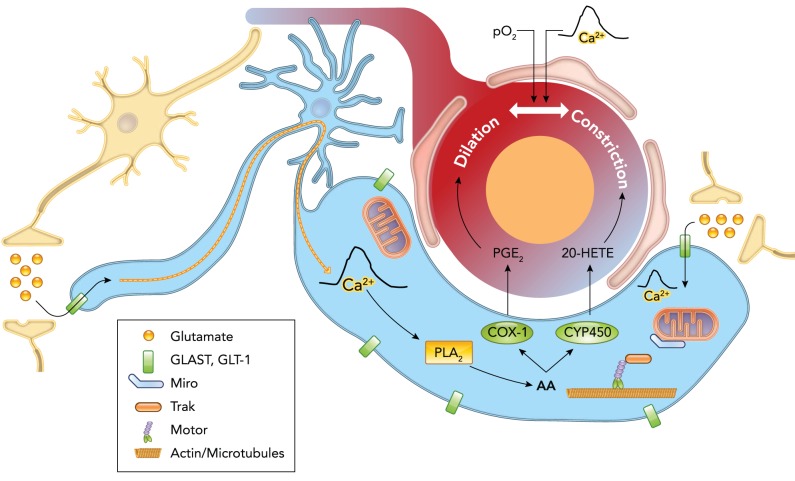FIGURE 2.
Schematic illustrating astrocytes as central mediators of neurovascular coupling
Neuronal activity causes release of glutamate, which is taken up by astrocytes, triggering a Ca2+ signal that may be propagated down to or separately occurs within the vascular endfeet. This endfoot Ca2+ signal stimulates release of vasoactive factors, namely arachidonic acid (AA) and its metabolites—prostaglandins (PGs), epoxyeicosatrienoic acids (EETs), 20-hydroxyeicosatetraenoic acid (20-HETE)—onto cerebral blood vessels, evoking dilatation or constriction. The direction of blood vessel caliber change may be modulated by the partial pressure of oxygen in the blood (Po2) or magnitude of the Ca2+ signal. The uptake of glutamate by astrocytes causes the immobilization of mitochondria near glutamate transporters in the processes or endfeet via changes in the binding of the transport proteins Miro and Trak. Astrocytic mitochondria are important in the generation and shaping of Ca2+ signals and thus likely play a key role in the control of blood flow in response to neuronal activity.

